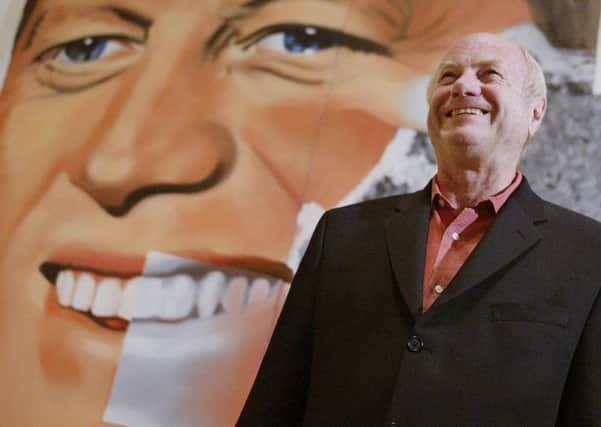James Rosenquist


Rosenquist’s wife, Mimi Thompson said he died on Friday in New York City after a long illness.
Rosenquist started by painting signs and billboard advertisements in Times Square and other public places. He later incorporated images from popular culture, from celebrities to consumer goods, into his work.
Advertisement
Hide AdAdvertisement
Hide AdOne of his best-known pieces is President Elect, created in the early 1960s. It is a billboard-style painting depicting John F Kennedy’s face alongside a yellow Chevrolet and a piece of cake.
“The face was from Kennedy’s campaign poster. I was very interested at that time in people who advertised themselves,” Rosenquist told art appreciation organisation The Art Story. “Why did they put up an advertisement of themselves? So that was his face. And his promise was half a Chevrolet and a piece of stale cake.”
Another popular piece was Rosenquist’s F-111, which superimposes a Vietnam War fighter-bomber on images of children and consumer goods.
Rosenquist resisted comparisons to his contemporaries Andy Warhol and Roy Lichtenstein. “I’m not like Andy Warhol. He did Coca-Cola bottles and Brillo pads. I used generic imagery – no brand names – to make a new kind of picture,” he said in 2007.
“People can remember their childhood, but events from four or five years ago are in a never-never land.
“That was the imagery I was concerned with – things that were a little bit familiar but not things you feel nostalgic about.
“Hot dogs and typewriters – generic things people sort of recognise.”
Rosenquist was born in Grand Forks, North Dakota. His mother was an amateur painter who supported his creative interests early on.
His watercolour of a sunset won him an art scholarship to take classes at the Minneapolis School of Art.
He later attended the University of Minnesota before moving to New York City in 1955.